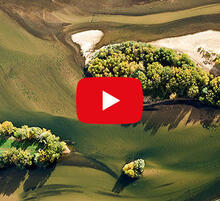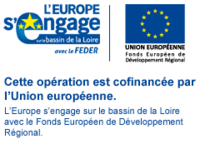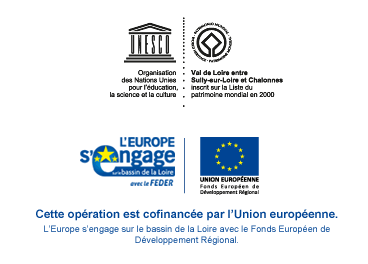- Home
- Know
- A la carte
- The Cher-Loire confluence
The Cher-Loire confluence
Published on 13 April 2017 - Updated 16 November 2018
A confluence guided by human hands

The Cher and Loire’s present meeting-point is manmade. Left to nature, the two watercourses’ confluence shifts, somewhat resembling a hank of wool – a mobile confluence.
“The present confluence is one among others.”
Louis-Marie Coward is a geographer and an expert on the Loire Valley.
“In days gone by, the Cher joined the Loire 10 or 12 kilometres upstream of Tours, while in periods of low water, as far as we can tell, it was downstream of Bréhémont, which makes it 30 or 40 kilometres between the two confluences. And there were confluences in between, one of which – the present confluence – was chosen, at the foot of today’s Saint-Mars-la-Pile railway viaduct and at the tip of the Berthenay peninsula.”
The choice was made in the 18th century, when the confluence point was fixed by canalising the Cher so that it met the Loire here. It was a matter of gaining cultivable land.
“So the first consequence was creation of an overflow branch to the south, the old and once partly navigable branch of the Cher. The new overflow branch provided an outlet for major floods thanks to a spillway created across from Villandry in the 19th century. The second consequence was to have a fixed location where boats would have no difficulty in finding the Cher’s mouth without getting lost in dead ends or backwaters.”
More easily navigable all year round, in winter the Cher became the bargees’ river of choice.
“There was little or no ice on the Cher as the Loire’s ice came down from the Upper Loire, upstream of Nevers; it formed there and then came downriver little by little.”
And it was here, right next to the artificial confluence, that a railway bridge was built in 1845 – not without its problems, as the Loire took steps of its own.
“I believe Saint-Mars-la-Pile bridge was swept away by one of the 19th century’s great floods, and that when they rebuilt it, they added two arches not included in the original work.”
Listen
Vous n’avez pas trouvé l’information que vous cherchiez dans cette page ?
Demandez-nous
Bien reçu !
Nous vous répondrons prochainement.
L’équipe de la Mission Val de Loire.

![Nouvelles Renaissance(s] 2023](/var/storage/images/val-de-loire-refonte/dossier-de-parametrage/pied-de-page/nouvelles-renaissance-s-2023/517479-13-fre-FR/Nouvelles-Renaissance-s-2023_image_largeur220.png)


 Lettre d'information
Lettre d'information
 Facebook
Facebook
 Flickr
Flickr
 Podcloud
Podcloud
 Dailymotion
Dailymotion
 Box
Box
 Slideshare
Slideshare
 Diigo
Diigo

